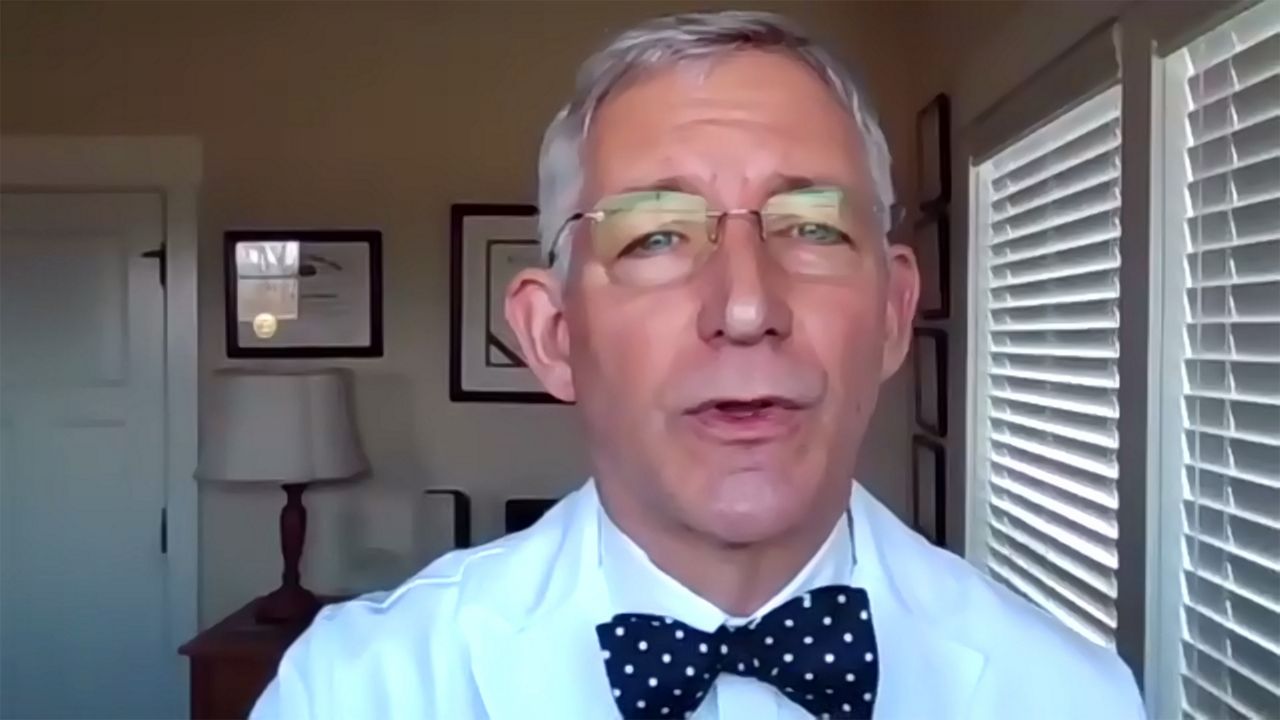COLUMBUS, Ohio — COVID-19 cases in Ohio have declined by more than 90% since the peak of the omicron surge, but health officials said residents should continue to wear masks indoors until the state reaches lower numbers.
What You Need To Know
- Ohio's health director says a future COVID-19 variant is likely
- Officials said testing and therapeutics are available to residents
- Officials still encourage masks as the virus continues to spread in Ohio
Ohio Health Director Dr. Bruce Vanderhoff said the latest virus trends are a “welcome relief,” noting that the drop in cases and hospitalizations allowed the Ohio National Guard to end its surge support for Ohio hospitals earlier in the week. Vanderhoff said residents should still be mindful of the virus’s presence in the state, especially individuals who are in high-risk categories.
“The fact is that COVID-19 is still a real presence in Ohio, and as much as we look forward to declaring that we're in the all clear, the data still point toward caution and tell us we're not quite there yet,” Vanderhoff said during a news conference Thursday.
Ohio’s case rate per 100,000 residents has dropped to 144 for the previous two-week period, which compares to the peak in January of 2,200, Vanderhoff said. As of the latest update, hospitals reported 1,345 patients with COVID-19, down from 6,749 at the peak.
There is currently significant variance in virus levels from county to county, so Vanderhoff encouraged residents to look to their local health departments for guidance.
“As schools, organizations and businesses begin to consider easing their mitigation efforts, they should take into account conditions on the ground in the communities they serve,” he said.
Vanderhoff said it’s likely another variant will emerge, and he encouraged residents to get vaccines and booster shots so the state is better prepared if that happens. He said more than 6.6 million Ohioans received the vaccine, while about 3.3 million have received an additional dose.
“That leaves several million people who are likely eligible, but missing out on the potential benefits of boosters. And while many of us are tired of wearing a mask, until COVID-19 cases drop further in most parts of the state, it's still a good idea to mask in crowded indoor settings,” he said.
Officials reminded residents that free testing is widely available in Ohio and that many physicians are prescribing oral antiviral medications for high-risk individuals who get sick.
OhioHealth infectious disease expert Dr. Joe Gastaldo said he has been trying to raise awareness with health care providers that these medications for outpatients are now an option.
“It's quite important to let Ohioans know that these products are available for at-risk people who have COVID-19, regardless of their vaccination status, to really give them another layer of protection against hospitalizations or even dying,” he said.
Gastaldo said he is concerned that people will become less cautious to protect themselves from getting COVID-19 as they hear about the declining numbers.
“This virus is still here, and I am concerned that people will hear that COVID-19 is no longer consequential, and obviously that is a dangerous statement to make moving forward. People need to still remain vigilant, and the degree of vigilance really needs to be taken down to an individual context,” he said.









